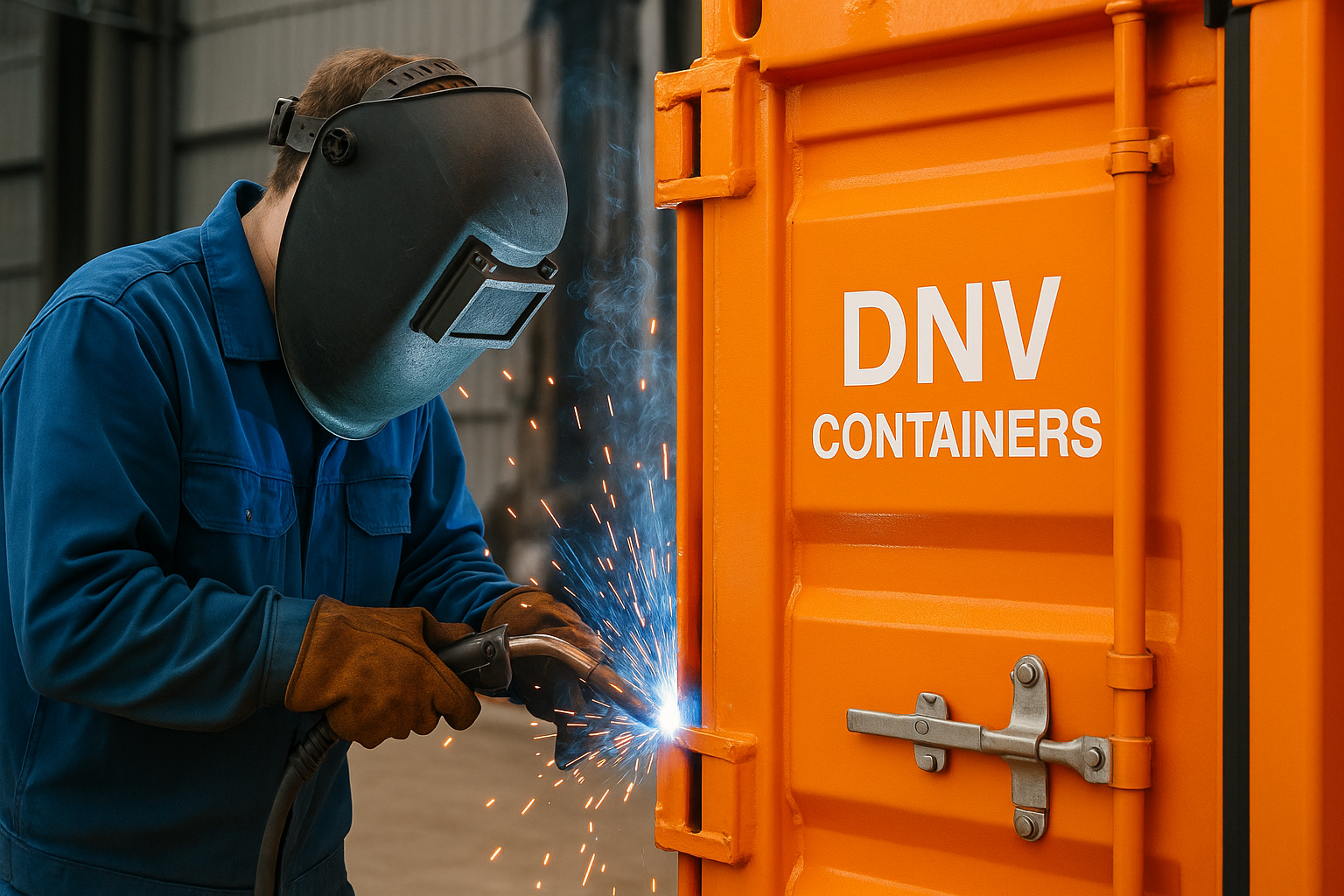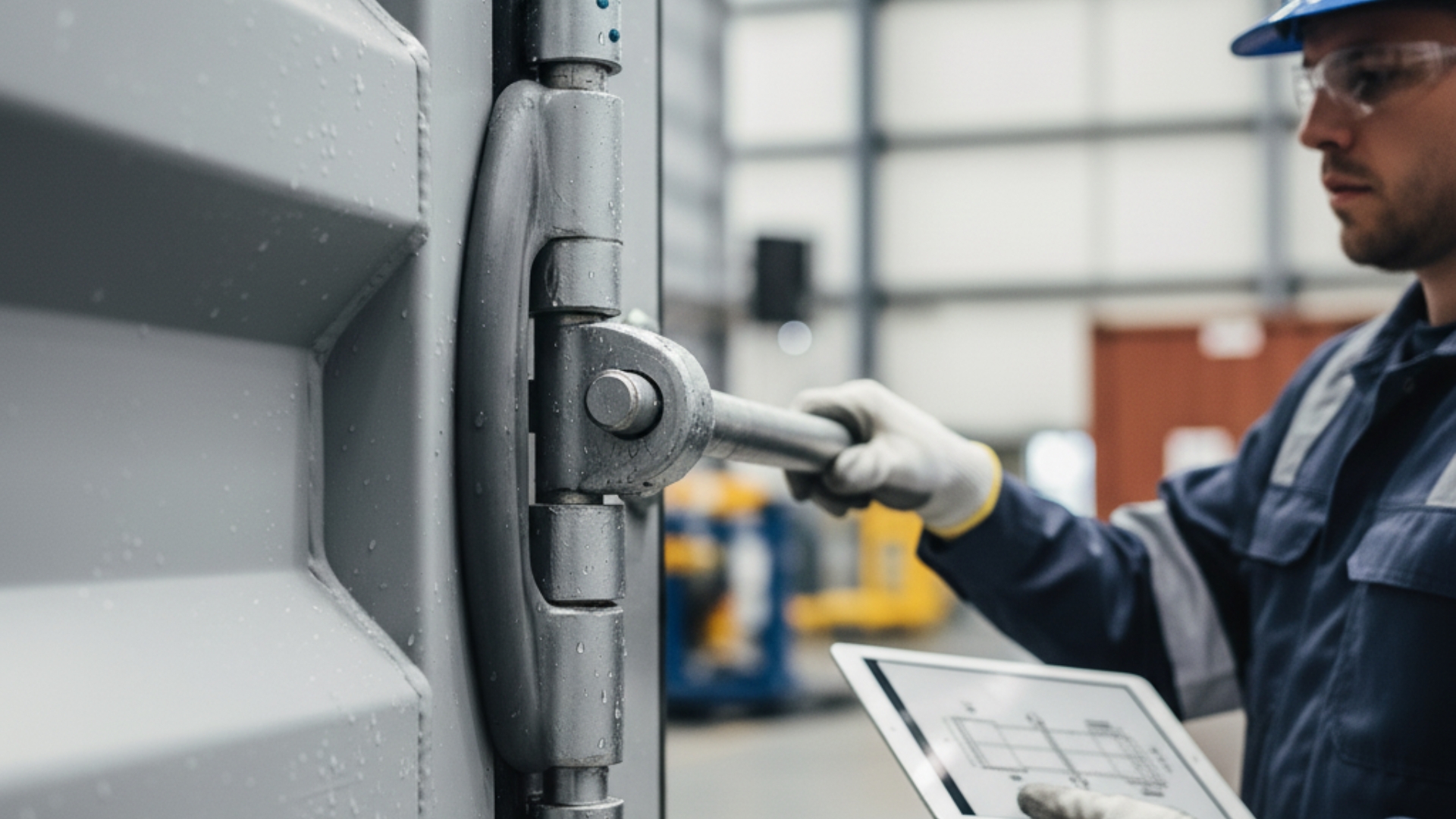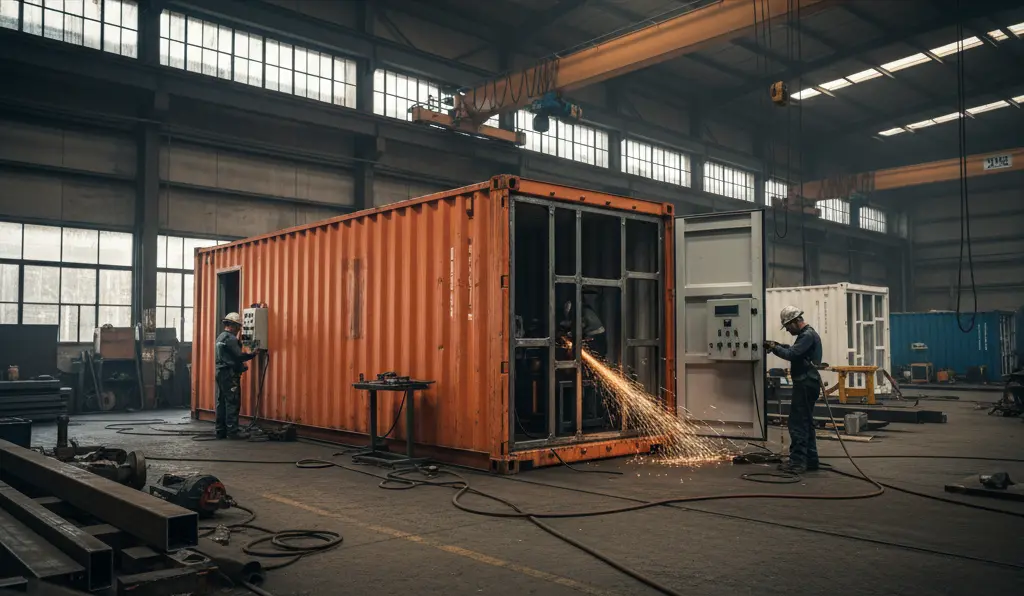When it comes to offshore operations, safety and durability are not just preferences. They are critical requirements. Whether it’s oil rigs, energy vessels, or offshore supply chains, every container used in these environments must meet rigorous standards. One such standard is DNV 2.7-1, a globally recognized guideline for offshore container design and fabrication. Among its many requirements, welding takes a central role.
In this blog, we’ll explore how welding standards are defined under DNV 2.7-1, what makes a procedure acceptable, and why following these guidelines is essential for the reliability and safety of offshore containers.
1. What is DNV 2.7-1 and Why Welding Standards Matter
DNV 2.7-1 is a certification standard issued by DNV, a leading international classification society. It sets out the requirements for offshore containers used in the transport and lifting of goods on ships, platforms, and other offshore installations.
Welding is a critical process in the construction of these containers. Strong, clean, and precise welds are essential to prevent failures under pressure or in harsh offshore environments. These welds must handle constant movement, extreme weather, and rough handling – making adherence to welding standards a matter of safety and performance, not just compliance.
2. Welding Procedure Specification (WPS)
Before any welding takes place, a Welding Procedure Specification must be created. A WPS is a detailed document that outlines how the welding will be performed. It includes essential information like:
- The type of welding process (such as MIG, TIG, or SMAW)
- The materials being joined
- The welding position (flat, horizontal, overhead, etc.)
- Type of electrodes or filler metal
- Preheat and post-weld heat treatment requirements
- Travel speed, voltage, and amperage settings
In short, the WPS acts like a recipe that ensures consistency and quality in every weld. It must be followed precisely to maintain the integrity of the structure, especially for offshore containers exposed to high risk conditions.
3. Procedure Qualification Record (PQR)
A WPS is not valid on its own until it is backed by a Procedure Qualification Record, or PQR. This is the process where a test weld is made following the instructions laid out in the WPS. The test sample is then inspected and tested under rigorous conditions.
These tests include visual inspection, tensile strength testing, bend tests, and more. The aim is to prove that the welding procedure can produce sound welds that meet or exceed the strength and quality required for offshore use.
If the test weld passes, the PQR is documented and serves as proof that the procedure is qualified for use in real-world fabrication.
4. DNV Approval Process
Once the WPS and PQR are complete, they must be submitted for DNV approval. This process ensures that the proposed welding procedures meet the DNV 2.7-1 requirements.
The approval involves a detailed review of both the documentation and the physical results of the weld testing. DNV inspectors will check whether the chosen welding process is suitable for the type of material, environment, and load the container will be subjected to.
If the procedure is approved, it becomes a certified welding process that can be used for manufacturing DNV-rated offshore containers. This approval is critical for quality assurance and to gain acceptance in international offshore markets.
5. Visual Inspection of Welds
Even with approved procedures in place, every weld must be carefully inspected during and after fabrication. Visual inspection is the first step in this process. Trained inspectors look for surface defects such as:
- Cracks or porosity
- Undercuts or overlaps
- Incomplete fusion or penetration
- Burn-throughs or slag inclusions
While visual checks might seem basic, they often reveal early signs of poor workmanship or procedural errors. Detecting these issues before they become structural problems saves time, cost, and most importantly, lives.
6. Non-Destructive Testing (NDT)
For offshore containers, visual inspection alone is not enough. That’s where Non-Destructive Testing (NDT) comes in. NDT techniques are used to detect internal or subsurface defects without damaging the weld. Common NDT methods include:
- Ultrasonic Testing (UT) – Uses sound waves to detect internal flaws.
- Magnetic Particle Testing (MT) – Identifies surface and near-surface discontinuities in ferromagnetic materials.
- Radiographic Testing (RT) – Uses X-rays or gamma rays to create an image of the weld’s internal structure.
These tests offer an added layer of safety assurance and help validate that the welding meets not only the visible standards but also the structural requirements hidden from plain sight.
Conclusion
Welding standards under DNV 2.7-1 are not just bureaucratic hurdles, they are essential safeguards that protect people, property, and projects in some of the harshest environments on Earth. At Al Basata, we understand the importance of precision and compliance in offshore container fabrication.
From drafting a WPS to passing rigorous DNV approvals and inspections, every step in our welding process is handled with care and expertise. Because when it comes to offshore safety, there is no room for shortcuts.
If you are looking for DNV-certified offshore containers that are built to the highest welding standards, Al Basata is your trusted partner.




